Updated: 18-Apr-2018
The European aviation and astronautics group "European Aerospace and Defense System" brings together companies from France, Germany, Spain, etc. and is responsible for programs such as the "Arianespace" that through Divisions like Astrium, which in turn gathers other companies in the construction of parts for the Ariane-4 and -5 rockets (for example, Daimler, CASA, MBB, etc.).
-Under the Astrium name the space programs and their propulsion systems are carried out.
-For the spatial issue, the EADS Organization has the "Astrium" Division, which groups together three business units: satellites, space transport and Services.
-We are interested in the trace of space transport and within it, the propulsion.
-For the construction of their project materials, EADS-Astrium contracts companies in the sector.
-For example, through SAFRAN, it receives the knowledge and engines for the SEP, SEPR, LRBA, etc.
-It contracts the old Snecma (Safran) and in turn with Daimler, the construction of the Vulcain engines, and presently the Vulcain 2.
-The design of the Vinci engines was made in a specialized place known as the Ottobrunn Center, which also owns the Production and Manufacturing Department.
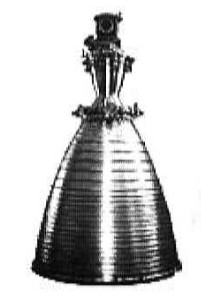
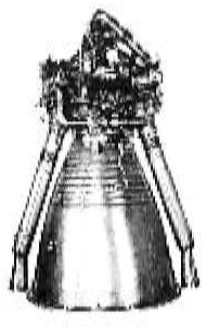
“Vulcain and Vulcain 2”
-Both Vulcain engines run on cryogenic fuels LOX and LH2. The thrust of the first one is 1075 kN and the latter 1350 kN.
-This last thrust equals 4 million CV.
-In the head of the Vulcain camera we see the vernier assembly by cardan in order to position the nozzle.
-In the Vulcain 2, the turbo-pump nozzles are extended to add to the thrust. It also uses the cardan joint as "gimbal" for the engine to be adjustable.
-The Aestus engine is used in the upper stages. We can see the high engine nozzle.
-It has a thrust of 28 kN (i.e. 59,400 CV).
-It was designed by the Ottobrunn SPC, and used MMH / N2O4 fuels.
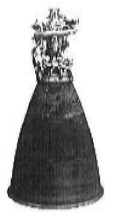
“Aestus”
-The HM7 engine that was developed in the B version in the same Center like the previous ones, really comes from SEPR. (see).
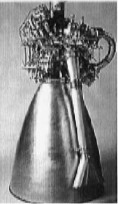
"HM7-B"
-The HM-7 project started in 1973 and was used in the Ariane 1, 2 and 3. With 210,000 CV (70kN). They used LOX and LH2. Lately it returns to Ariane 5.
-The Vinci is an advanced rocket engine, using cryogenic fuel, like the previous one. It delivered 1,300,000 CV or 180 kN.
-Recently they entered into service on the latest Ariane 5 in its upper stage. As it has the expansive cycle system, it does not require turbo pumps to feed the engine.
-With this more powerful engine the Ariane 5 increases its payload up to 12 tons.
-The Vinci can be re-started up to 5 times.
-Another rocket engine is the RS-72, developed together with Boeing-Rocketdyne. It delivered 125,000 HP. and uses N2O4 / MMH, bipropellant with a turbo-pump. It has much to do with the Aestus and with the turbo-pump of the American XLR 32.
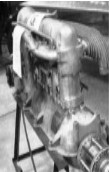
"RS-72"

"400 N"
-The 400 N is a little- thrust cryogenic engine, using LOX and LH2, but its importance is that it can run for 415 seconds, a very high value for its size.
-It also manufactures a large collection of "thrusters" or small engines for maneuvers and relocation of satellites, capsules, vessels or transfer vehicles. As well as apogee engines, like the above mentioned 400 N.
-Standing out:
-The S-4 of 4 N of thrust.
-The S10-1 10 N push
-The S10-2 also of 10 N.
-The S22-2 of 22 N.
-The S-400-1 and -2, 400 N push.
-The 500 N and 200 N known as EAM and ATV.
-These engines have been developed in the Center of Lampoldshausen.
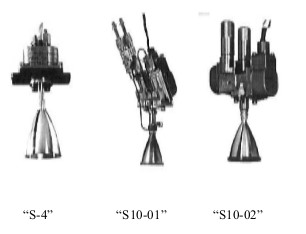

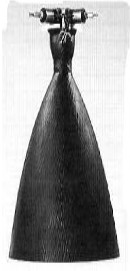
“500 N”
The 500-N will be operational by 2008. It is an apogee engine.
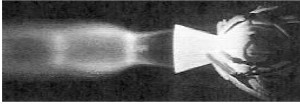
“S-400-2”
-These engines mentioned above are the same as those mentioned below, and have been developed in Lampoldshausen.
-For the people who have more or less been following this type of material, we have seen precedents of thrusters based on hydrazine.
They are:
-The CHT-O.5 of 0.5 N thrust, in Skynet, etc.
-The CHT-1, in Rocsat, Globastar, Pleiades, etc.
-CHT-2, Ulyses, Meteosat, etc.
-The CHT-5, Skynet, Hyparcos, NATO 4, etc.
-CHT-10N, Meteosat, SAX, etc.
-The CHT-20, in Eureca, Haps, Metop, etc.
-The CHT 400, in Ariane 5 and ARD.
-Alike engines we see in SEP, SEPR, CNES, LRBA, French.
-Some are dated from 1966 so they have been inherited by the new organizations.

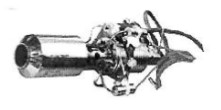
"CHT-5"
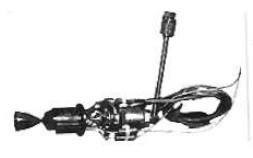
"CHT-10"
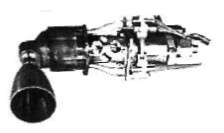
"CHT-20"
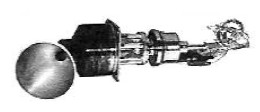
"CHT-20"
-Other engines that have been used by EADS-Astrium, are those used by the Symphonie 1 satellite: it had a 400 N and a 10 N with its tank.

"10N assembly"
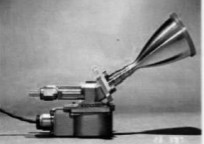
“10N, mounted at 45°”
-An interesting project is RITA. It is an ion reactor with the name of "Radio-frecuency Ion Thruster Assembly".
-The RITA-10 model, installed on the GEO satellite, for voyages into deep space and interplanetary missions. It has a duration of 15 years. With a very low consumption its operating life is about 20,000 Hrs.
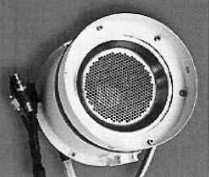
“RITA”
-It uses xenon ions and its thrust is 15 mN nominal.
From Appendix 10: France / Europe. Within the European Aerospace Defense System there is a section that has developed a light electric aircraft.
-The concept is that of a hybrid aircraft in which a Wankel engine from Austro Engines drives a Siemens generator that charges some batteries. These batteries feed the two engines for the Fans to fly.

“The project's demonstration aircraft”
-Another engine drives the main wheel to taxi and as take-off aid.
Engines of EADS
Model: 10-N
Arquitecture:
Chambers:
Fuels:
Feed System:
Ignition:
Thrust:
Weight:

"EADS, 10N engine at 45°"
Model: 200N
Arquitecture:
Chambers:
Fuels:
Feed System:
Ignition:
Thrust:
Weight:
Model: 400N
Arquitecture: Rocket engine
Chambers:
Fuels: LOX and LH2
Feed System:
Ignition:
Thrust:
Weight:
It can run for 415 seconds.

"EADS, 400 N"
Model: 500N
Arquitecture:
Chambers:
Fuels:
Feed System:
Ignition:
Thrust:
Weight:

"EADS, 500 N"
Model: Aestus
Arquitecture: Rocket engine
Chambers:
Fuels: MMH / N2O4
Feed System:
Ignition:
Thrust: 28 kN
Weight:

"EADS, Aestus"
Model: Astrium
Arquitecture:
Chambers:
Fuels:
Feed System:
Ignition:
Thrust:
Weight:
Model: CHT-0.5
Arquitecture:
Chambers:
Fuels:
Feed System:
Ignition:
Thrust:
Weight:
Model: CHT-1
Arquitecture:
Chambers:
Fuels:
Feed System:
Ignition:
Thrust:
Weight:
Model: CHT-10
Arquitecture:
Chambers:
Fuels:
Feed System:
Ignition:
Thrust:
Weight:

"EADS, CHT-10"
Model: CHT-2
Arquitecture:
Chambers:
Fuels:
Feed System:
Ignition:
Thrust:
Weight:
Model: CHT-20
Arquitecture:
Chambers:
Fuels:
Feed System:
Ignition:
Thrust:
Weight:

"EADS, CHT-20 fig. 2"
Model: CHT-400
Arquitecture:
Chambers:
Fuels:
Feed System:
Ignition:
Thrust:
Weight:
Model: CHT-5
Arquitecture:
Chambers:
Fuels:
Feed System:
Ignition:
Thrust:
Weight:

"EADS, CHT-5"
Model: HM-7
Arquitecture: Rocket engine
Chambers:
Fuels: LOX and LH2
Feed System:
Ignition:
Thrust: 70 kN
Weight:

"EADS, HM7-B"
Model: RITA, -10
Arquitecture:
Chambers:
Fuels:
Feed System:
Ignition:
Thrust:
Weight:

"EADS, Rita"
Model: RS-72
Arquitecture: Rocket engine
Chambers:
Fuels: MMH / N2O4
Feed System:
Ignition:
Thrust:
Weight:

"EADS, RS-72"
Model: S-10-1, -2, -01, -02
Arquitecture:
Chambers:
Fuels:
Feed System:
Ignition:
Thrust:
Weight:
Model: S-10-13, -18
Arquitecture:
Chambers:
Fuels:
Feed System:
Ignition:
Thrust:
Weight:
Model: S-22-2, -02
Arquitecture:
Chambers:
Fuels:
Feed System:
Ignition:
Thrust:
Weight:
Model: S-4
Arquitecture:
Chambers:
Fuels:
Feed System:
Ignition:
Thrust:
Weight:
Model: S-400-1, -2, -10 y -20
Arquitecture:
Chambers:
Fuels:
Feed System:
Ignition:
Thrust:
Weight:
Model: Vinci
Arquitecture: Rocket engine
Chambers:
Fuels:
Feed System:
Ignition:
Thrust: 180 kN
Weight:
It can be re-started up to 5 times
Model: Vulcain
Arquitecture: Rocket engine
Chambers:
Fuels: LOX and LH2
Feed System:
Ignition:
Thrust: 1075 kN
Weight:

"Vulcain engine"
Model: Vulcain-2
Arquitecture: Rocket engine
Chambers:
Fuels: LOX and LH2
Feed System:
Ignition:
Thrust: 1350 kN
Weight:

"Vulcain-2 engine"


